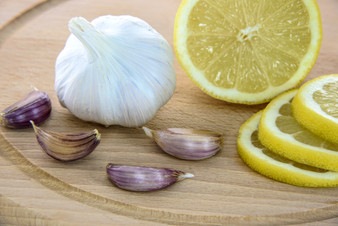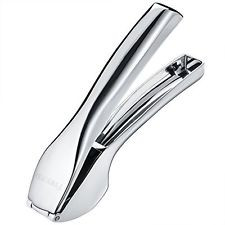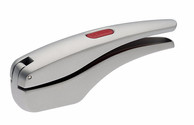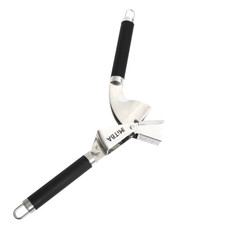it is an amazing ingredient that can do wonders to your dish, and it can be used in many forms.
One of the most common ways to use garlic is to crush it – it enables us to spread the garlic equally in the dish and saves us the time-consuming (and slightly dangerous) work with a knife.
With that said, if you don't have the right tool, you can get frustrated with pressing garlic and compromise on non-fresh garlic from a box.
We gathered 5 important things that everybody should consider before deciding which garlic press they are going to buy, so they will have a utensil that is easy to work with and that they won't need to change after a few years:
The first thing worth checking before choosing a garlic press (or any other kitchen gadget for that matter) is the material which it's made of.
Before choosing, customers should ask themselves how often they will need or want to use the garlic press, and how important it is for them that it will last for a long time.
That looks pretty obvious, but actually, you'll be surprised how many people prefer to spend less money on kitchen or other home products without considering that they will need to buy the products again 2 years later.
So back to the garlic press material, there are 3 different common options:
plastic
Garlic presses which are made of plastic are usually very cheap since the manufacturing costs for them are much less expensive than other materials.
Obviously, the low cost comes with a high price. While some of these presses are respectfully durable, most of them are bound to break at some point, especially after regular use.
Also, using them usually requires more effort.
metal
Metal and alloys are being used a lot for garlic presses since they are usually strong but still not too expensive to manufacture.
The most common are aluminum and zinc alloy, but other metals can be found as well.
While they are much stronger than plastic, these materials have other disadvantages – they tend to rust after 2-3 years of use, and with this rust, they lose their durability and break.
Also, these materials are usually not dishwasher safe (actually we have heard about new zinc alloy garlic presses that broke after 8 rounds in the dishwasher).
The good part is the retail price of these presses, which is pretty average.
Stainless steel
Lots of companies choose this material to form their garlic press and other kitchen gadgets.
Stainless steel is probably the ideal choice for this purpose since it's an extremely durable material that can handle high pressure and a regular use.
While there are many compounds of stainless steel (mostly known as "grades"), the most common for kitchenware purpose is grade 304, which contains 18% chromium and 8% nickel.
Due to the fact that garlic presses are meant for heavy-duty, stainless steel is our most recommended material, since it can deal with lots of force and daily use.
Stainless steel garlic presses might be on the high-end of the price range (usually 18$-25$), but in our eyes, it's definitely worth the quality and the fact that you'll probably won't need to buy another one again.
* Some brands sell their garlic press on a respectively low price and claim that it's made of stainless steel, but it's actually made of zinc alloy.
2. The design of handles
The design of handles affects tremendously on the performance of the garlic press.
Handles that are too thin or thick can be uncomfortable to hold, which can end in unpleasant warts, so it's important that the thickness will be exact.
In addition, a slim layer of rubber covering the handles can help to make the gripping much more comfortable.
Also, the length of the handles matters a lot – long handles create a moment that makes it easy to crush the garlic without putting effort.
This is why we would recommend buying a garlic press with long handles (unless you want to develop your palm muscles while crushing garlic).
3. Size of the holes
Another important aspect is the diameter of the chamber holes since it will determine the size of pieces of garlic you will get after pressing.
When it comes to garlic, size does matter :) - when the pieces of garlic are too large they are dropping to the bottom of the bowl, and when they are too little they are getting browned way too fast and it makes it hard to cook them.
When the pieces are in a good uniform size you get an equal garlic flavor throughout your dish.
We found that 1.5 mm (0.06 in) holes give the best result, so we made sure to apply it on our stainless steel garlic press.
4. Access to all parts
For many people, cleaning the dishes is NOT the preferable part of their daily routine, and when it comes to garlic presses, it can get even more annoying if you don't choose your product wisely.
The thing to keep in mind is that all the different parts of the press should be accessible and that there won't places where the leftovers can hide.
Having the ability to raise the chamber is also a big advantage since most of the garlic leftovers will be in this part of the press.
5. Maximization of garlic
No one likes to waste edible food ingredients.
When it comes to garlic crushers, there is a big range of results in the matter of how much garlic is left inside the chamber after pressing.
In order to use the maximum of the garlic clove's edible part, the free space between the piston of the garlic press and the chamber (when the piston is inside the chamber after pressing) should be as little as possible.
We hope that we helped you with your decision!
Stay tuned for other tips and recommandations :)









No comments:
Post a Comment